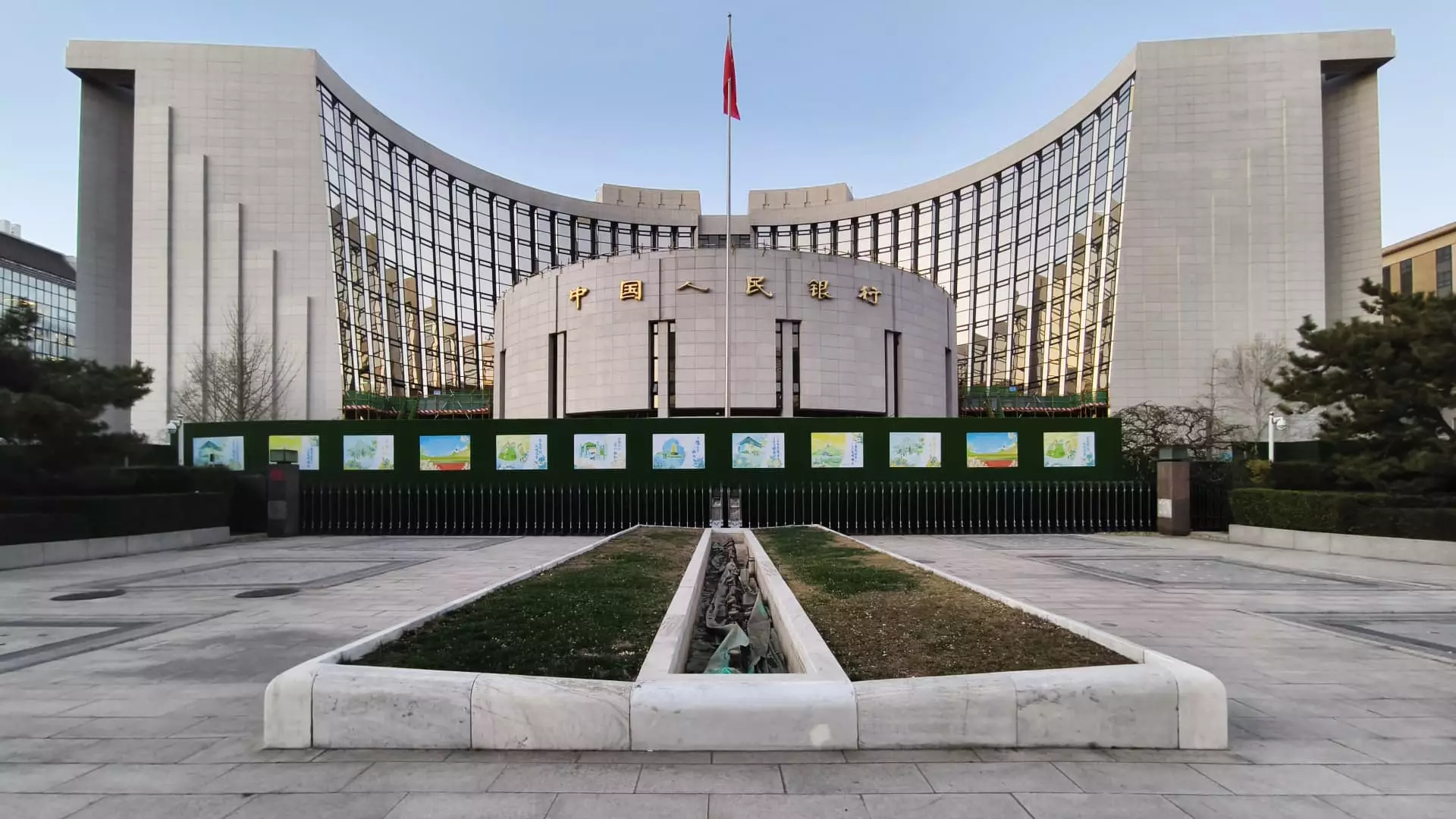The Chinese economy is currently at a crossroads, grappling with the dual challenge of sustaining economic growth while stabilizing its currency, the yuan. On a recent Friday, the People’s Bank of China (PBOC) made a crucial decision to maintain its benchmark lending rates, keeping the one-year loan prime rate at 3.1% and the five-year rate at 3.6%. This decision comes at a time when the global economic landscape is shifting, with significant implications for both domestic and international markets.
By leaving interest rates unchanged, the PBOC is signaling a cautious approach amidst uncertainties surrounding domestic consumption and global economic conditions. The one-year loan prime rate, which influences a majority of corporate and consumer loans, remains unchanged, indicating a preference for stability in an environment characterized by economic fragility. The five-year rate, often used as a benchmark for mortgage costs, also reflects this cautious stance, particularly in light of the ongoing challenges in the property market.
This decision is not entirely unexpected, especially in the wake of a recent policy shift by the U.S. Federal Reserve, which implemented a 25-basis-point cut on Wednesday. The Fed’s outlook, which now suggests only two cuts in 2025, draws attention to the interconnectedness of global monetary policies. Economists indicate that while the Fed’s movements will exert some pressure on the yuan, the PBOC seems determined to maintain its course without initiating drastic measures to defend the currency.
Analysts are increasingly concerned about the potential for a further weakening of the yuan, a trend that could significantly impact not only China’s economy but also global markets. The perceived inaction of the PBOC to intervene in the yuan’s depreciation raises questions about the central bank’s strategic priorities. Farzin Azarm, managing director at Mizuho Americas, posits that the central bank’s current stance indicates a broader market-driven approach rather than one focused on currency intervention.
The outlook for the yuan is exacerbated by geopolitical factors, notably the tariff threats from the incoming U.S. administration. Many investment banks are predicting that the currency’s value could drop further in the coming year, suggesting that external pressures may force China to reconsider its economic strategies.
Despite the decision to keep rates steady, there is a growing chorus of voices advocating for more pronounced monetary easing. Recent economic data points to persistent deflationary pressures coupled with lukewarm consumer demand, further complicated by a stagnating real estate market. The PBOC’s prior rate cuts earlier in the year showcased its willingness to adopt an aggressive monetary stance, but the limits of such measures in a complex economic environment are becoming apparent.
Analysts such as Yan Wang from Alpine Macro suggest that while the Fed’s easing cycle may provide “some room” for the PBOC to maneuver, it is ultimately fiscal policy that will play a pivotal role in reviving China’s economy. With greater fiscal flexibility at the government’s disposal, an emphasis on fiscal stimulus could alleviate some of the deflationary pressures faced by the yuan and support domestic growth initiatives.
As China continues to navigate through challenging economic waters, the delicate balance between maintaining investor confidence and stimulating growth will become increasingly critical. The PBOC’s decision to keep rates steady reflects an acknowledgment of current economic realities, but questions remain about the effectiveness of such a strategy in light of persistent economic shortcomings.
Ultimately, the intertwining threads of monetary policy, currency stability, and fiscal measures underscore a complex economic landscape. Whether the PBOC will adopt a more aggressive approach to rate cuts or rely more heavily on fiscal mechanisms remains to be seen. However, what is clear is that the path ahead will be challenging as China strives to emerge from the current economic malaise and ensure sustainable growth for the future.

Leave a Reply